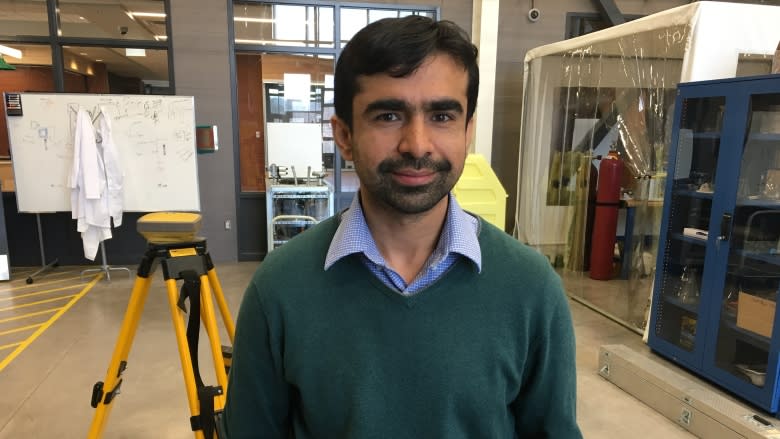How do you make potato farming more efficient? This UPEI project aims to find out
A UPEI research project aimed at making potato farming more efficient has received funding from the National Science and Engineering Research Council of Canada.
The project is one part of an initiative involving the P.E.I. Potato Board, Cavendish Farms, growers, Agriculture Canada and the province focused on improving yields, profitability and sustainability.
Aitazaz Farooque, the lead researcher and assistant professor at the UPEI school of engineering, said he is working on technology that would tell farmers which areas to put fertilizers and pesticides in their fields, reducing the costs and environmental impact of farming.
"The idea here is to develop the sustainable technology so that we can apply crop inputs, which is fertilizers, pesticides, lime application, based on the need, not everywhere," Farooque said.
"To develop the technology to assess the crop nutrient status, how much crops need, and apply based on need. And by doing that we can achieve environmental benefits which is less runoff of nutrients in water bodies and leaching in sub-surface water quality, and at the same time less greenhouse gas emissions in the environment."
Innovations in potato farming
Ryan Barrett, research and agronomy co-ordinator with the P.E.I. Potato Board, said the organization got involved because of the possible benefits technological innovations would bring to farmers.
"We thought this project would sort of meet many of those needs because it's investigating technology and methods that aren't normally used in P.E.I. so far in potato production," he said.
"If this technology proves out to be effective, it could result in better application of fertilizers and has the opportunity to save money for the producer as well as have less environmental impact."
Farooque said by using sensors and cameras, the aim is that eventually farmers would have access to real-time data on what parts of their fields need more or less of certain nutrients.
"Farmers, they recognize that their soil and crops are variable, they are not uniform all over the place and there is a variability exists," he said.
"But don't necessarily ... have the tools to characterize and look at that variability, evaluate that variability and manage that variability."
Practical applications
Farooque said he is working to identify which sensors work best with a plan to build a prototype of a spreader using an ATV with mounted sensors and cameras on it.
After working out any problems with the prototype, the goal is to apply the technology to the type of sprayer or spreader that a farmer would use.
His hope is that this project will eventually get simple technology into the hands of farmers.
"The idea here is to, at the end of the day, maybe five to 10 years from now, to come up with the technology that is a touch screen they can choose their options what they want to do, so it is easy, user friendly and cost effective," he said.
"I'm really hopeful that we will come up with something which is practical and useful for the growers."
More P.E.I. News



